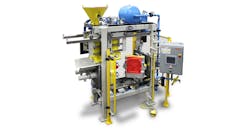Minimizing core defects begins with a thorough evaluation of tooling and process selection, and how they interact with the metals being used. Achieving optimal results may involve trial and error, drawing on expertise, and using simulation software. Successfully implementing new tooling typically requires a balanced combination of these approaches. Key considerations include venting, temperature control, sand blow dynamics, and the proper management of gassing—both catalyst introduction and exhaust. Mastery of these elements is critical for success.
Tooling engineers often work with simulation software, or with sand and chemical suppliers who have proprietary tooling-design software. Frequently, the combination of art and science can help speed the design process to ensure successful core production.
Every core machine and tool functions in ways that may not always be anticipated or avoided. Nearly every tool may require modifications, and only through patient trial and error can the tooling engineer achieve consistent, high-quality cores
A critical but often overlooked aspect of coremaking is recordkeeping – records for sand, resin, and machinery settings when a high-quality core is produced. The extensive list of variables involved in creating a quality core is remarkably complex and easily forgotten. Ensuring that your recordkeeping is as detailed and precise as your focus on other aspects of the process is essential for consistent success.
Integrated recipe functionality
One highly effective way to reduce core defects across different core products and machines is to use programmable logic controllers (PLCs) with recipe functionality. This feature is relatively easy to implement in modern core machines equipped with PLCs and human-machine interfaces (HMIs) for operational control. However, many foundries rely on older, relay-based core machines, so this will be a more costly upgrade.
Nearly any core machine equipped with PLC and HMI controls can integrate recipe functionality into the core room process. Each core product or SKU has unique process attributes, including sand and resin volumes, blow pressures, gas pressures, times, temperatures, and cycle counts. By carefully recording these settings in a recipe matrix, a skilled engineer can preload them into the HMI.
With this set-up, the HMI and PLC automatically control the core machine, removing the need for manual adjustments by the operator. Once the matrix is established and validated, the operator simply inputs the SKU information into the HMI, and the machine autonomously manages the process.
By leveraging accurately recorded process data and modern instrumentation and control technology, core room operators can produce higher-quality cores with a reduced likelihood of defects. This results in improved overall quality, less scrap, and increased profitability.
Sand binders and compressed air
The quality of the sand and binder mixture is critical when using all coremaking processes. With either a batch or high-speed continuous mixer, you must ensure accuracy of material delivery to the mixer, and that it is repeatability. Shell sand should be sourced from a quality vendor with strict quality control. When using the cold box process, the choice of a catalyst and quality gas generator is extremely important. Several types of catalyst are available, including phenolic urethane/amine vapor, furan/SO2, acrylic/SO2, and sodium silicate/CO2.
Gas generators are designed to take cold-box curing systems to optimal efficiency. Their extremely efficient and economical use of curing agents, rapid curing rates, and careful attention to safety, health, and environmental concerns make them suitable choices for foundries.
Cold-box systems vaporize the amine or methyl formate instead of atomizing it, so that they use far less of it. As little as one pound of amine will cure a ton of core sand. A properly designed gas generator can reduce catalyst consumption by as much as 50%. Reducing the amount of catalyst provides downstream benefits as well, as producing less gas leads to lower emissions and reduced costs for scrubbing and acid usage.
Reducing moisture
A related consideration is the quality of compressed air used in the coremaking process. In most foundries, compressed air is essential for operating air cylinders and tools, yet it is often overlooked as a critical process component. When compressed air is used in coremaking, minute quantities of moisture (even in vapor phase) can result in core defects. Moisture can affect every machine and product a little differently. No-bake cores take longer to strip, shell cores may realize peelback, hot-box cycle times may increase, and core-box cores loose strength and shelf life.
The dynamics of air drying are complex, and you should consider consulting experts in this area to help eliminate compressed air as potential source of core defects.
Cleanliness
Often overlooked is ensuring cleanliness of the tool and the core machine. Cleaning the vents and exhaust regularly along with constant seal maintenance is a must. Foundries have become accustomed to using compressed air blow-off in this step. But as the U.S. EPA silica rules advance, this may add new challenges to any core room operation.
Many core machines are fully open to the foundry environment and these machines will be a first point of review under the currently proposed silica rule. One method that may be employed to medicate these particulate emissions is to fully enclose the core machine. This has serious cost and operational consequences, but a smartly designed enclosure can be employed that allows tool cleaning while working to capture silica and amine fugitive emissions, and provide the necessary ergonomic access during operation.
Beyond the obvious need to keep the tool clean, its equally important to conduct routine cleaning of the core machine itself. Excess sand built up around the moving parts of the core machine will cause process and operational errors that can affect the quality of core. Some core processes may even require frequent cleaning throughout each shift
Eliminating defective cores from the casting process is achievable, but it requires diligent monitoring. Maintaining a detailed checklist for recordkeeping and analysis for each job is essential to drive downstream product quality improvements.
